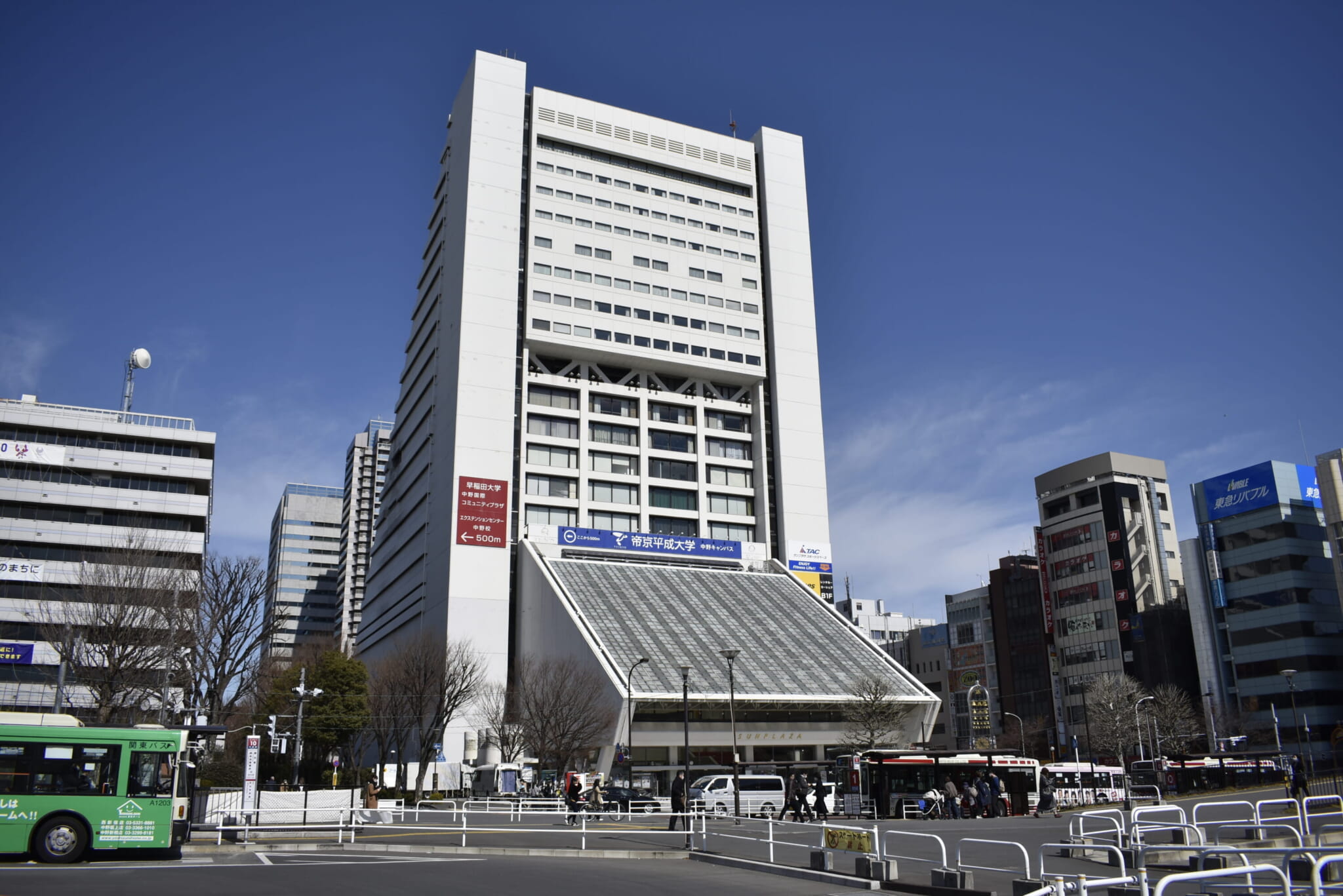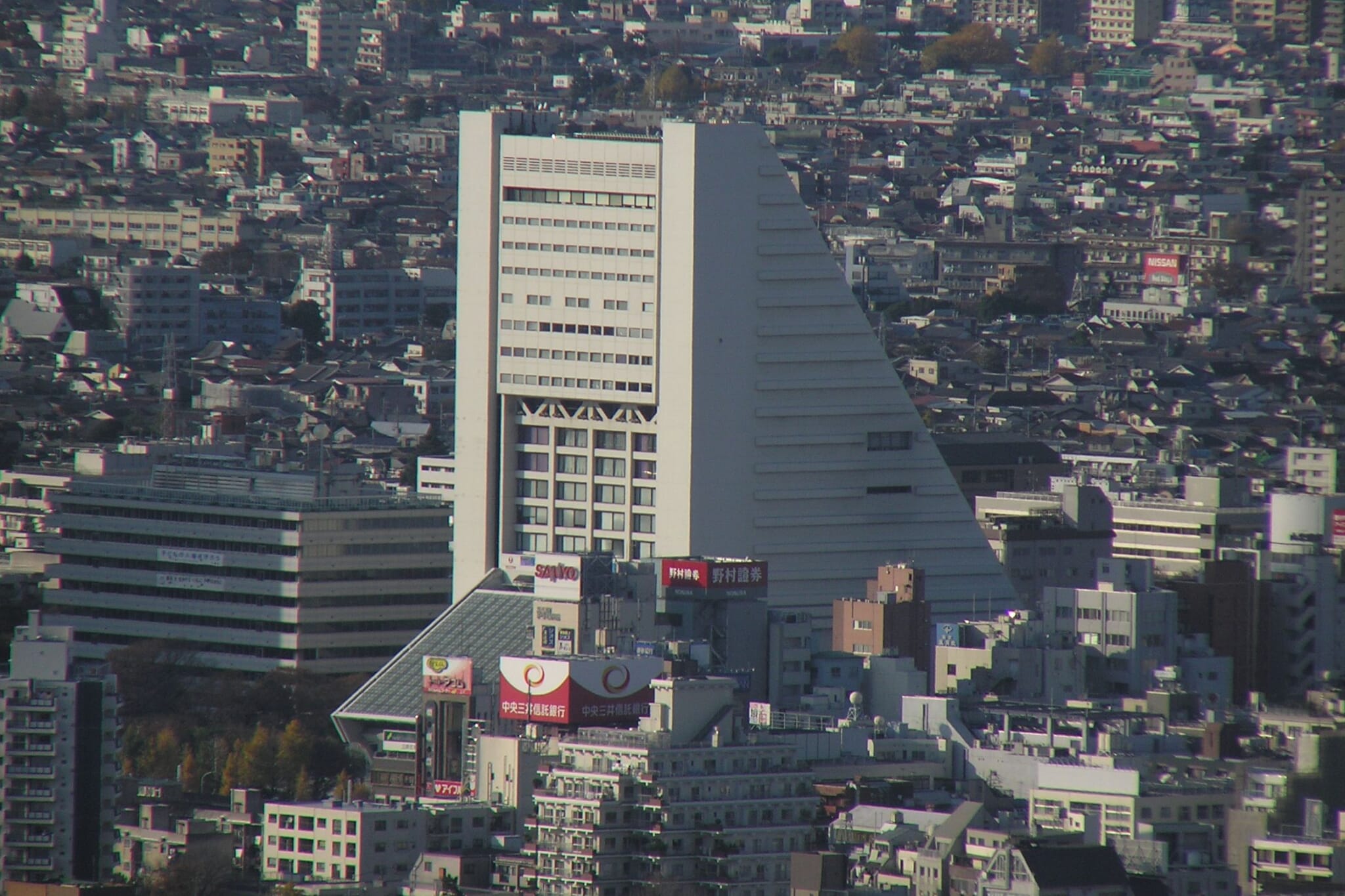For half a century, everything that happened in Nakano, happened in the shadow of the “Tokyo Pyramid,” otherwise known as Shoji Hayashi’s elegant and much-loved municipal landmark, Nakano Sun Plaza. Since its opening in 1973, the clean geometry and friendly-but-functional modernity of the building’s triangular construction has provided Nakano with not just a memorable identity, but also a hint of Showa-era pizazz that has helped elevate the ward’s image above that of the densely populated Shinjuku outpost it might otherwise have been considered.
As the building, which started its life as the National Working Youth Center, reaches its own middle age, its 50 years of valuable service will be marked not by celebration, but by the arrival of the wrecking ball. Ambitious and costly development plans mean that Nakano’s hitherto cheerfully ramshackle streets, whether they like it or not, are in for a dose of the now familiar blandifying steel, glass and concrete treatment that seems destined to scrub the 21st century capital of any stubborn stains of character, something that Sun Plaza has in droves.

Rapidly Expanding Capital
In 1967, as an ascendant post-Olympics Tokyo buzzed with the arrival of workers from all corners of Japan, each eager to play their part in and reap the rewards of the ongoing economic miracle, the Ministry for Labor began work on plans for the National Working Youth Center. Intending to provide a welfare facility that gave focus to the lives of young people potentially disoriented by the industrial and cultural chaos of an unfamiliar and rapidly expanding capital, it approached Nikken Sekkei, the architectural giant behind Tokyo Tower.
Wishing to create a building that was not just practical, but also unique and attractive to the young people it was intended for, chief architect Hayashi came up with the idea of a mixed-use construction in the shape of a triangle. Facilities including a concert hall, a swimming pool, a gym, tennis courts and even a wedding chapel, were stacked in ingenious fashion, with safety dictating that those used by the greatest number of people were situated on the lowest floors. Hotel rooms offering spectacular urban views took their place at the top.
In less capable architectural hands, the building, which rises 21 stories and 92 meters above the colorful and bustling but relatively low-rise Nakano Dori high-street, could have appeared intimidating or oppressive. But Hayashi, whose other Tokyo landmark, Ginza’s San-ai Dream Center (a building that hums with the electric excitement of mid-1960s Japan) is also set for imminent demolition, knew the value of a simple idea stylishly executed, giving Sun Plaza a democratic monumentality and a magnetic sense of place that will be sorely missed.
Heavy-Hitting Rolodex
Aside from its role as an instantly recognizable icon of the Nakano skyline, Sun Plaza’s artistically elevated status has been firmly cemented in the public consciousness by the standout success of its semi-subterranean concert hall, a 2,222-seat cultural catacomb that punched spectacularly above its weight for several decades. A boldly ambitious booking policy that aimed at the stars with far-sighted precision ensured that, from its very beginning, the hall rivaled larger and more established venues in both relevance and big-name bankability.
Spinning its way through a dizzyingly diverse array of genres, Sun Plaza’s heavy-hitting rolodex stopped with astounding frequency on the names of live-forever legends and high-on-the-zeitgeist pop pioneers. From the stellar funk and soul of James Brown, Barry White and Ray Charles, through the post-punk invention of Talking Heads and Public Image Ltd, Sun Plaza drew Nakano a new musical map where Black Sabbath and Marlene Dietrich were neighbors, and a lifetime supply of cheap izakaya were just a stone’s throw away.
The New Tokyo Pyramid
In the summer of 2023, as the world frazzles in the heat of a newly confident climate crisis that is here to stay, and Japan’s population dwindles, Tokyo is in the midst of an inexplicable construction boom. While sites of 20th century cultural significance are torn down and identikit corporate strongholds take their place, environmental concerns raised by the citizens whose lives are tied to the future of the world’s greatest metropolis, are met with the same high-handed dismissal that brought a fiercely opposed Covid Olympics to forgettable fruition.
Despite public outcry, radical redevelopment of the much-loved Meiji Jingu Gaien complex will almost certainly go ahead. Plans for the area, a designated “scenic zone” since 1926, include the construction of a near-200-meter skyscraper and the felling of almost 1,000 trees; a shocking act of environmental vandalism in a city that already boasts among the lowest levels of urban green space in the world.
In 2022, Kisho Kurokawa’s Nakagin Capsule Tower, an irreplaceable and globally recognized architectural masterpiece of the Japanese Metabolist movement, was demolished after being left to deteriorate for decades. A long and ardent campaign to save the building for future generations having come to naught, this once-futuristic reminder of post-war Japanese vision and ingenuity was consigned to the ever-growing scrapheap of 20th century cultural heritage.
Nakano Sun Plaza, too, will soon be gone, and its place will be taken by a new tower that, at 262 meters, will be among the tallest in Tokyo. With gleaming new offices and commercial facilities, the opportunities for big-name brands will be stacked high. But in this era of fully-automated, yet far-from-luxury capitalism, where customers must work the registers and wait their own tables, the money that changes hands goes in only one direction.
Perhaps the new Tokyo Pyramid is not this vertiginous addition itself, but the know-your-place system of top-down planning and hang-the-consequences construction that imposes and then benefits from its realization. Thanks to its influence, and the influence of like-minded systems around the world, the lives of future generations in Nakano, and elsewhere, will play out under longer and darker shadows than those cast by Sun Plaza.









